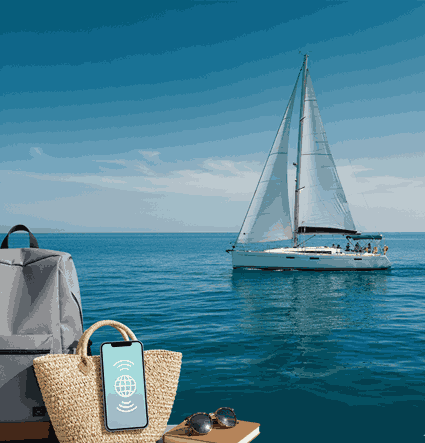Fall is “the best time of year to go pretty much anywhere” around the world. This isn’t one of those guides that lists the same obvious spots. I’ve dug deep to find destinations across six continents where fall actually means something special. The real details that matter when you’re planning a trip halfway around the world.
- Why Fall Works Everywhere
- 1. Kyoto, Japan
- Tip
- 2. Bavaria, Germany
- Oktoberfest Reality
- Bavaria’s Geography:
- Castle Country
- Tip
- 3. New England, USA
- Tip
- 4. Tuscany, Italy
- Vendemmia festival highlights
- 5. Seoul & Korean Countryside
- 6. Canadian Rockies, Alberta
- Banff vs Jasper
- 7. Patagonia, Argentina & Chile
- Argentina’s glacier country
- 8. Morocco’s Atlas Mountains
- High Atlas
- Tip
- 9. Turkey’s Cappadocia & Black Sea Region
- 10. Nepal’s Annapurna & Everest Regions
- 11. Chile’s Central Valley Wine Region
- The Regions
- 12. Scotland’s Highlands & Islands
- Whisky Season
- Isle of Skye
- 13. Austria’s Wachau Valley & Alpine Regions
- Wachau Valley
- Unique Alpine feature
- 14. India’s Kashmir Valley
- Saffron harvest season
- Gulmarg Gondola
- 15. Argentina’s Mendoza Province
- Wine experience value
Why Fall Works Everywhere
Lower prices, fewer people, and nice weather make fall an excellent time to travel. But there’s more to it. Fall hits this sweet spot globally where:
- Shoulder season pricing kicks in (20-40% savings)
- Summer crowds disappear, but attractions stay open
- Weather stabilizes after summer storms/monsoons
- Local harvest seasons mean incredible food everywhere
But here’s what nobody tells you: fall timing varies wildly by hemisphere and location. Southern hemisphere fall is March-May. Some places peak in September, others in December.
1. Kyoto, Japan
Let’s start with the place that does autumn as an art form. Japan’s autumn leaves are as iconic as its cherry blossoms, transforming the country into a breathtaking spectacle of vibrant reds, oranges, and golds from October to December.
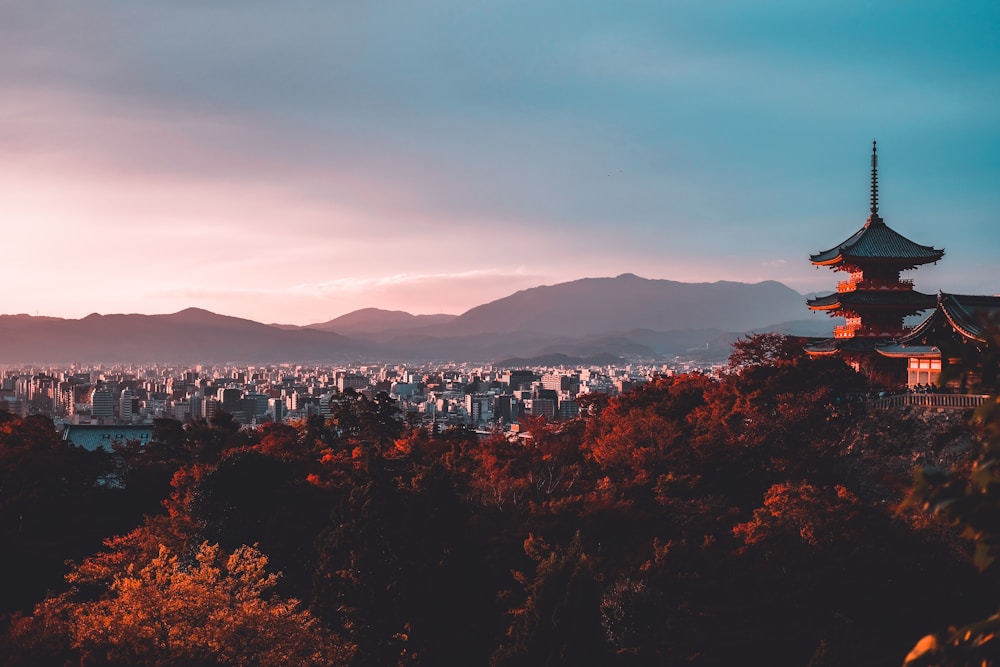
The Real Deal: Kyoto has over 2,000 temples and shrines, many surrounded by maple trees specifically planted centuries ago for fall viewing.
Timing Truth: Peak foliage times from the Japan Meteorological Corporation usually show Kyoto peaking mid to late November. But temple microclimates vary. Kiyomizu-dera peaks earlier than Arashiyama Bamboo Grove.
What You Actually Need to Know:
- Temple night illuminations (November only) are magical but crowded
- JR Pass saves massive money if you’re doing multiple cities
- Book ryokans 3+ months ahead for the fall season
- Gion district is a tourist hell during the fall – go early morning
Tip
Buy a 500-yen temple stamp book at your first temple. Collecting stamps becomes addictive and gets you into temple areas most tourists never see.
The Real Spots: Everyone hits Fushimi Inari and Arashiyama. Try Tofuku-ji Temple instead: 2,000 maple trees and actual locals still visit. Or take the train to nearby Nara. The deer park with fall colors is unreal, and you’ll have it mostly to yourself.
2. Bavaria, Germany
Bavaria delivers a fairy-tale fall without the fairy-tale prices of other European destinations. We’re talking about a region that does autumn festivals, castle views, and forest hikes better than anywhere else in Europe.
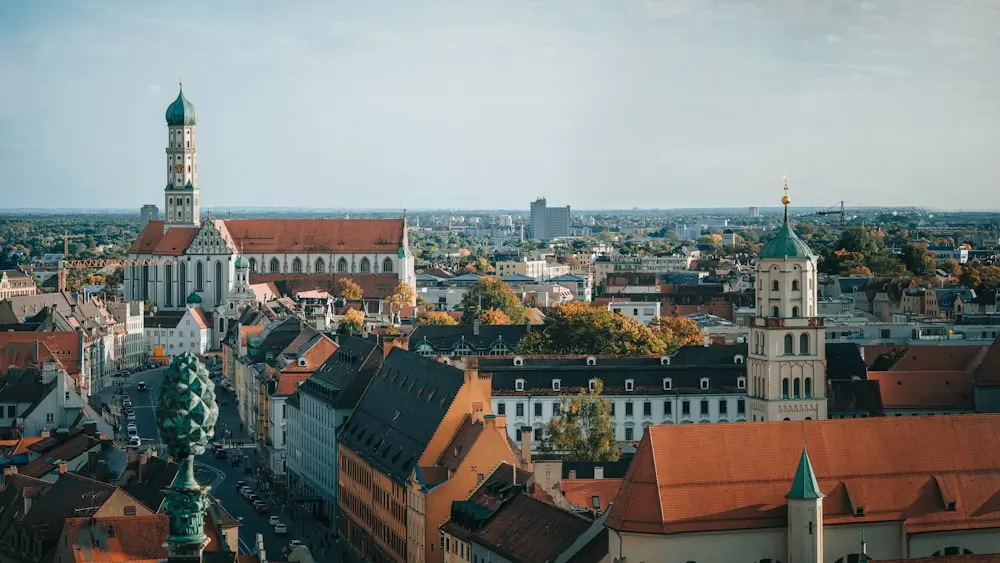
Oktoberfest Reality
Oktoberfest actually ends the first weekend in October. But here’s the secret: post-Oktoberfest Bavaria is better. Hotels drop rates, crowds disappear, and the beer gardens still serve fresh Märzen.
Bavaria’s Geography:
Bavaria stretches from the Danube to the Alps. Northern Bavaria (Franconia) peaks earlier, in late September. Alpine Bavaria peaks in October. The variety means you can chase peak color for weeks.
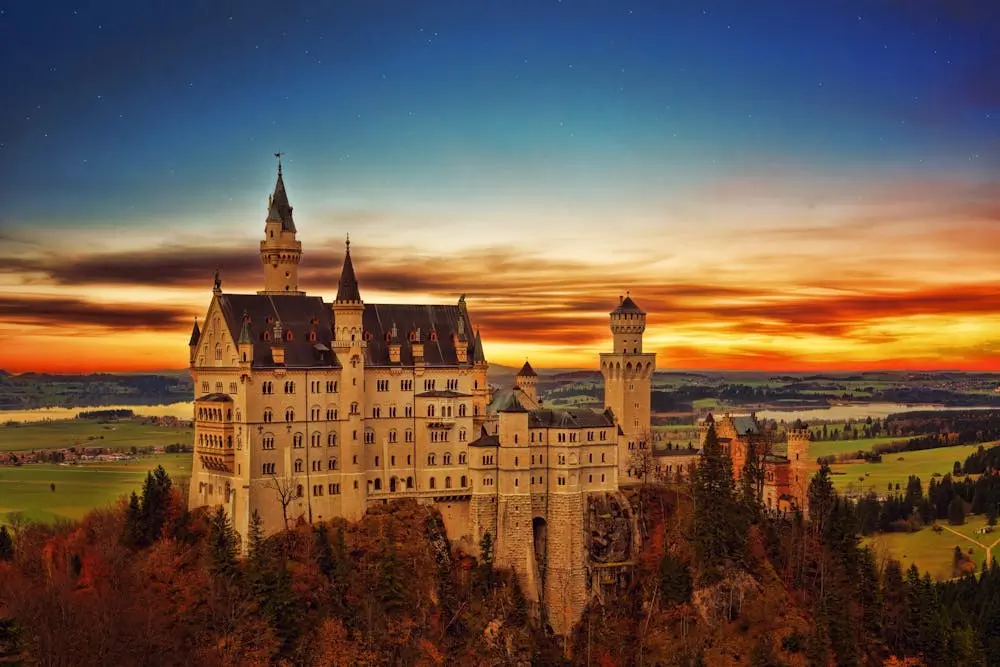
Castle Country
Neuschwanstein gets all the attention, but Linderhof Palace in the fall is better. It’s smaller, less crowded, and the surrounding forest looks like a Brothers Grimm illustration. Plus, it’s open year-round, unlike some other royal properties.
Tip
Basing in Munich is obvious, but expensive during the fall festivals. Try Garmisch-Partenkirchen instead, Alpine views, lower prices, and 90 minutes to Munich by train.
Local Knowledge: Every village has a Gasthaus (local tavern). Order whatever’s seasonal – venison, wild boar, fresh trout. It’s usually better and cheaper than hotel restaurants.
3. New England, USA
Yeah, it’s obvious. But New England does fall foliage like nowhere else on Earth because of its unique geography and tree species. Six states, 71,000 square miles of forests, and the most reliable fall show in the world.
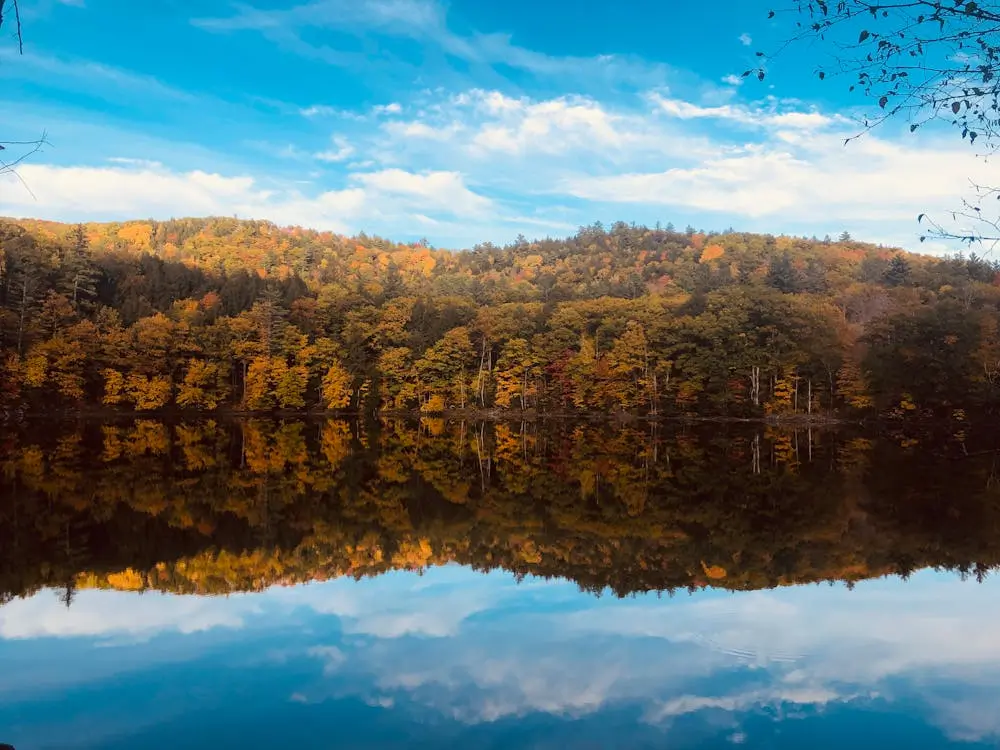
The Science: New England’s mix of maple, oak, birch, and ash creates the color variety. Cool nights and sunny days trigger maximum color intensity. Plus, the region’s latitude (same as northern Spain) creates perfect fall weather.
Vermont’s Northeast Kingdom: While everyone crowds Stowe, the Northeast Kingdom stays quiet. Lake Willoughby, wedged between two mountains, creates perfect mirror reflections. Peak color hits the first two weeks of October.
Tip
Back roads beat scenic byways. Vermont Route 100 is famous and crowded. Route 108 through Smugglers Notch is better and has half the traffic.
New Hampshire White Mountains: Mount Washington is famous but touristy. Cannon Mountain Aerial Tramway gets you to 4,080 feet for $28 with better foliage views.
4. Tuscany, Italy
Tuscany’s romantic vineyards turn golden in fall, but there’s more to it than wine country Instagram shots. This is harvest season, Vendemmia, when the whole region celebrates with festivals, special menus, and open cellars.

Tuscany’s rolling hills create layers of color – golden wheat stubble, red-brown earth, green cypresses, and yellow-orange vineyards. It’s like a Renaissance painting come to life.
Vendemmia festival highlights
- Chestnut festivals throughout October in hill towns
- Sagra della Castagna in Marradi delivers roasted chestnuts, local crafts, and medieval costumes
- Restaurant menus switch to hearty fall dishes with wild boar, mushrooms, truffles
Harvest Reality: September through October is crush season. Many wineries offer harvest experiences where you actually pick grapes. It’s touristy but fun, and you learn how wine actually gets made.
5. Seoul & Korean Countryside
If anyone asks what is the best season to visit South Korea? Then, let us say in chorus is the “autumn” because the Korean fall is spectacular and still relatively undiscovered by mass tourism.
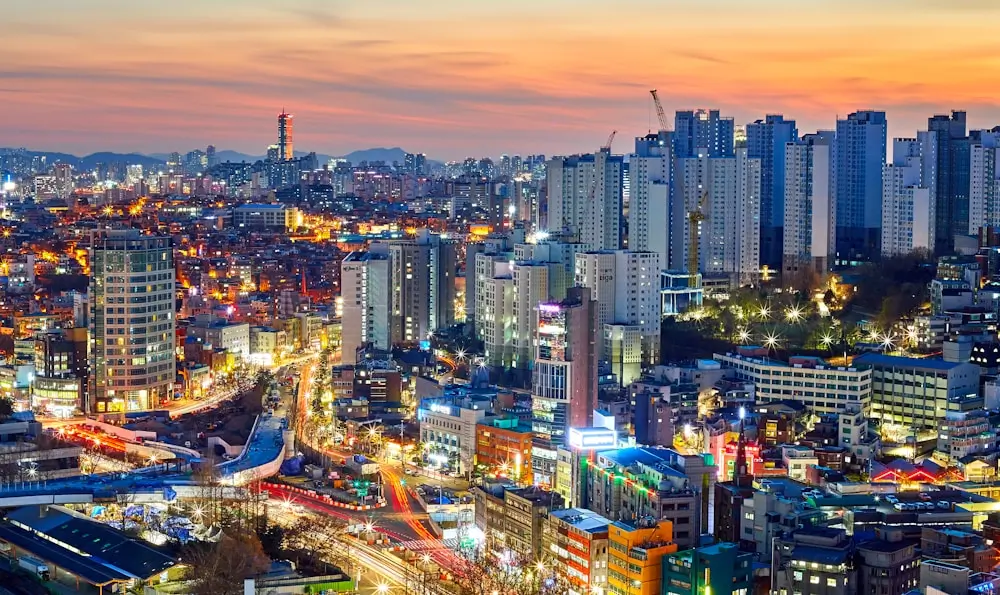
Why Korea Works: Not as hot as summer, wet and humid as spring, or as cold as winter, the fall in Korea has the sunshine shimmering and the added bonus of fewer crowds than Japan’s fall season.
Namsan Tower is surrounded by autumn maples, plus fall festivals in every neighborhood. But the real magic is outside Seoul.
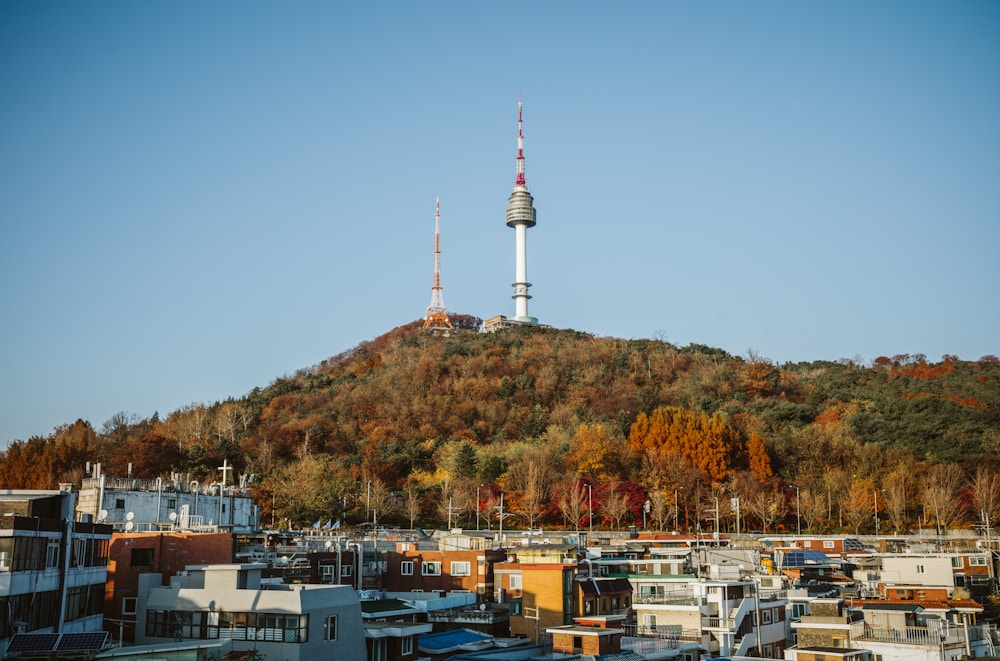
3 hours east of Seoul is Seoraksan National Park. This park has some of Asia’s best fall hiking. Cable cars for lazy tourists, serious mountain trails for hikers. Peak color hits mid to late October.
Fall is the season of Korean harvest festivals. Chuseok (Korean Thanksgiving) typically occurs in September/October, featuring family gatherings, traditional foods, and cultural performances in every city.
6. Canadian Rockies, Alberta
Everyone thinks Canadian fall means eastern maples, but the Rocky Mountain fall is different and dramatic. Golden aspens, snow-capped peaks, and wildlife getting ready for winter.
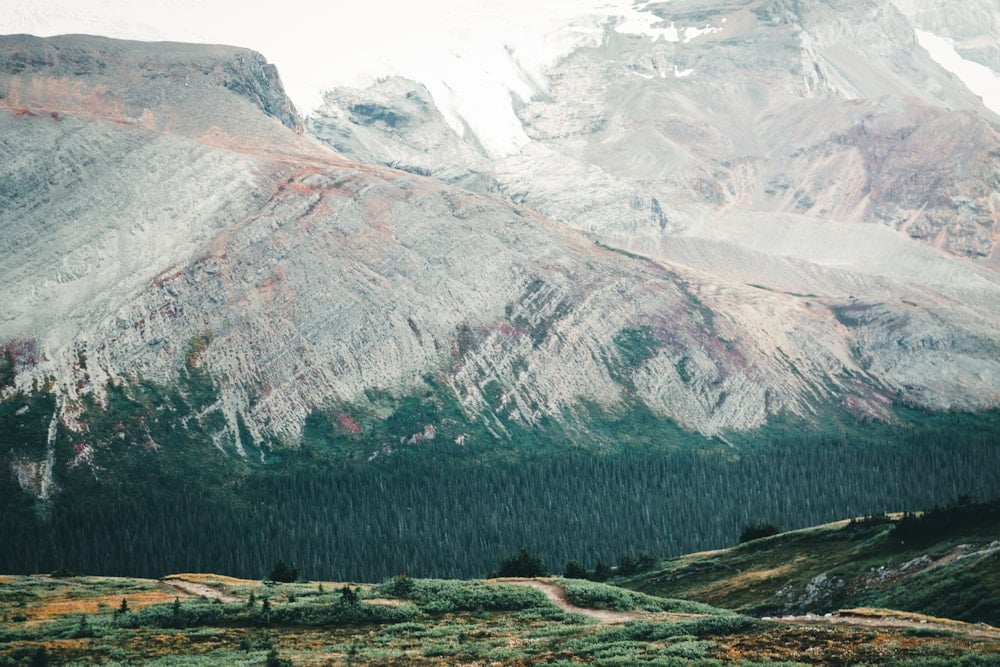
Aspen is like Colorado, but with fewer people and lower prices. Aspens turn brilliant gold against evergreen forests and glacial peaks. Peak timing is mid to late September.
Banff vs Jasper
Banff is more famous and crowded. Jasper has similar views to half the tourists. Both are spectacular, but Jasper feels more wild.
| Banff | Jasper |
|---|---|
| Heavy crowds but spectacular scenery | More moderate crowds with equally stunning views |
| Excellent accessibility and infrastructure | Excellent wildlife, higher sighting chances |
| Good wildlife viewing opportunities | Wilderness feeling that Banff sometimes lacks |
Fall is when elk bugle (mating calls), bears fatten up for winter, and mountain sheep come to lower elevations. Your chances of wildlife sightings are way higher than in summer.
Mountain weather changes fast. September days can be 70°F, and nights can hit freezing. October can bring snow to high elevations. Pack layers and check road conditions.
7. Patagonia, Argentina & Chile
Southern hemisphere fall runs from March through May, which means Patagonia hits peak autumn when everywhere else is doing spring or summer. It’s geographically remote but worth the journey.
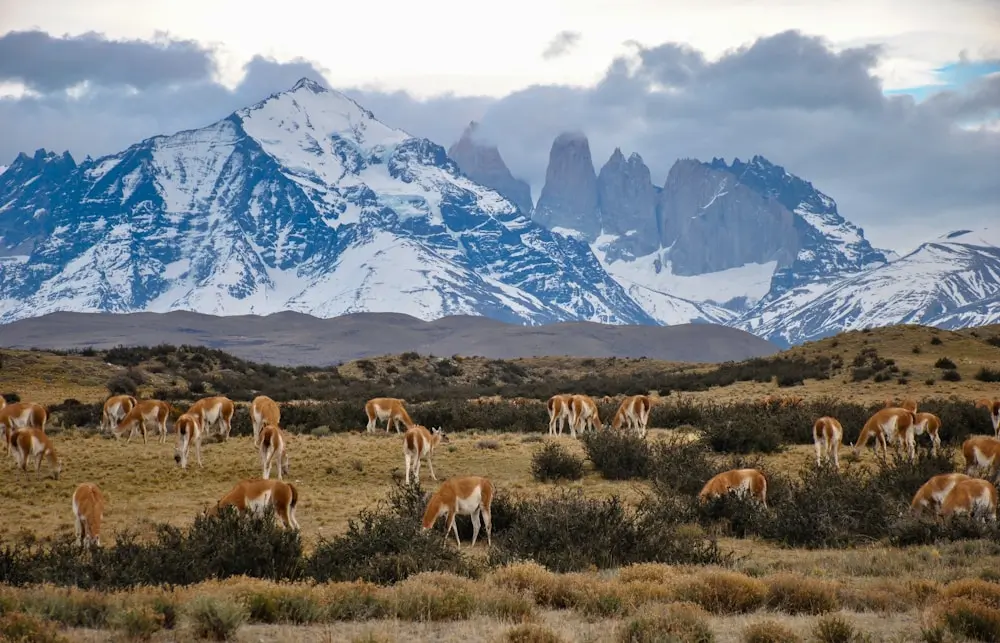
Summer crowds are gone, the weather is stable with less wind, and hiking conditions are perfect. Torres del Paine in Chile delivers the famous towers reflected in autumn-colored lakes with fewer people on the trails.
Argentina’s glacier country
- El Calafate area: Perfect base for fall exploration
- Perito Moreno glacier tours: Less crowded than in summer
- Estancia ranch stays: Authentic gaucho experiences
- Lago Argentino: Autumn colors frame glacial blue waters
- Torres del Paine: Chile’s most famous park is spectacular in the fall. The famous towers reflected in autumn-colored lakes, fewer people on trails, and stable weather for multi-day hikes.
Real Costs: Patagonia isn’t cheap. Flights to Buenos Aires or Santiago, then regional flights or 20+ hour bus rides. But fall shoulder season helps with accommodation costs.
8. Morocco’s Atlas Mountains
Fall is perfect for Morocco because the summer heat breaks, but winter rains haven’t started. The Atlas Mountains offer cooler temperatures, clear skies, and some of the best hiking in North Africa.
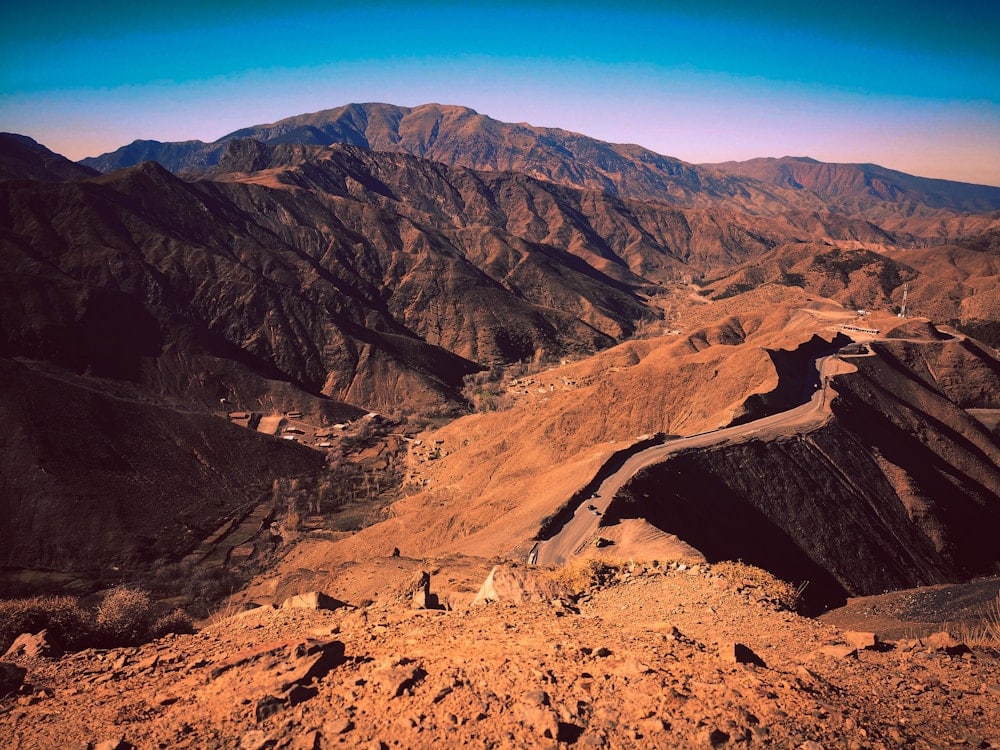
Summer temperatures in Morocco can hit 120°F. Fall brings daytime temps in the 70s-80s with cool nights. Perfect for exploring cities and mountains.
High Atlas
The range that runs through central Morocco peaks above 13,000 feet. Fall colors come from oak and cedar forests, plus the contrast of snow-capped peaks with the desert below.
Tip
Use Marrakech as your base for Atlas day trips. The city itself is more pleasant in fall temperatures, and you’re 2 hours from mountain hiking.
Berber Villages: Fall is harvest time in mountain villages. You’ll see locals harvesting dates, olives, and nuts. Many villages offer homestays with traditional meals.
9. Turkey’s Cappadocia & Black Sea Region
Turkey does fall beautifully into two completely different regions. Cappadocia’s unique landscape gets perfect weather, while the Black Sea region delivers European-style forest colors.
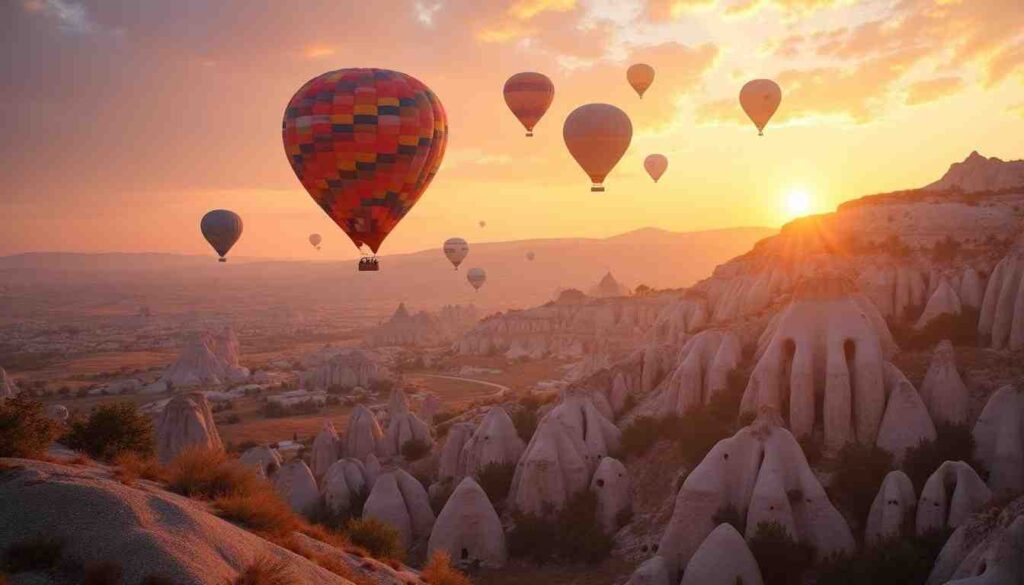
Cappadocia Fall: Those famous hot air balloon rides? Fall is the best time. Clear skies, stable weather, and cooler temperatures for hiking through the fairy chimneys.
Black Sea Coast: Turkey’s northern coast has deciduous forests that rival New England. Late October brings spectacular colors around Trabzon and Rize provinces.
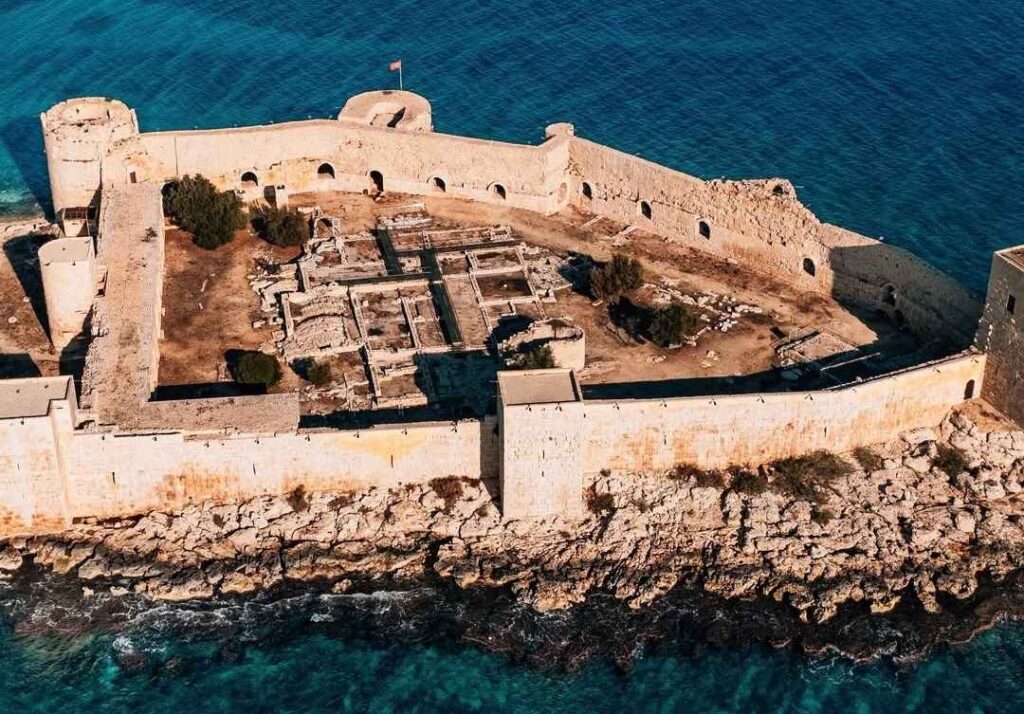
Fall is harvest season for Turkey’s tea region. The Black Sea area produces most of Turkey’s tea, and fall harvest time means fresh tea and local festivals.
Turkey offers incredible value compared to European destinations. Fall is shoulder season, so hotels and tours cost 30-40% less than in summer.
10. Nepal’s Annapurna & Everest Regions
Post-monsoon Nepal (October-November) delivers the world’s best mountain views with clear skies and stable weather. Plus, fall colors in rhododendron forests at lower elevations.
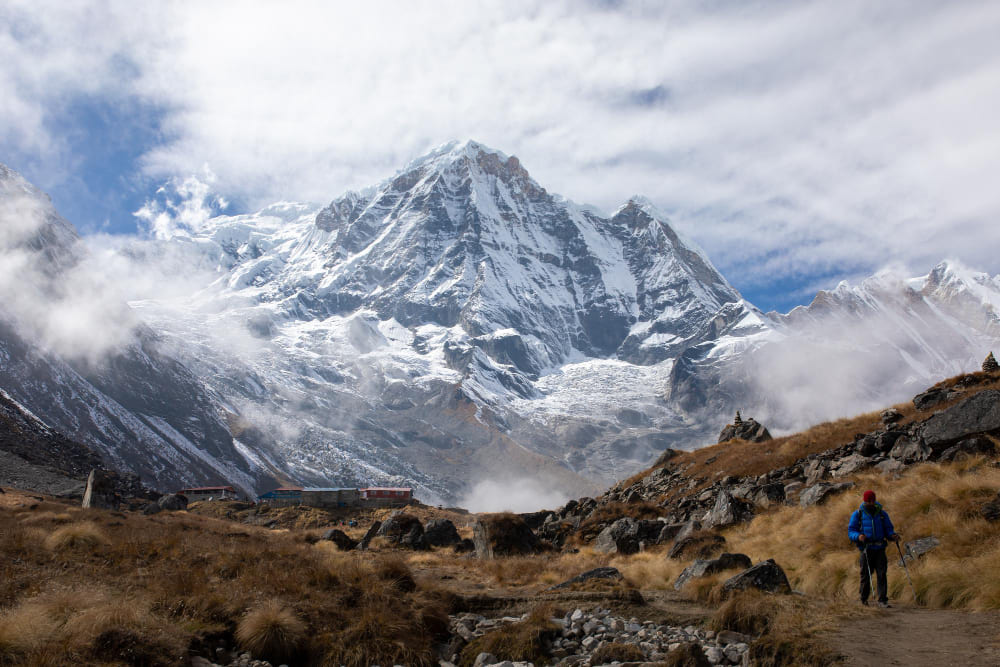
Monsoon season ends in September, leaving crystal clear air and stable weather. Mountain views that are impossible to see during monsoon season suddenly appear.
The world’s most famous trek hits perfect conditions in October-November. Clear mountain views, comfortable temperatures, and tea house accommodations are open.
While high altitudes stay brown, lower elevations (6,000-10,000 feet) have rhododendron and oak forests that turn colors in October.
Fall coincides with Dashain and Tihar festivals – Nepal’s biggest celebrations. Villages come alive with celebrations, but some tea houses might close for festival days.
11. Chile’s Central Valley Wine Region
March-May is harvest season in Chilean wine country, which means fall weather, harvest festivals, and the best wine experiences of the year.
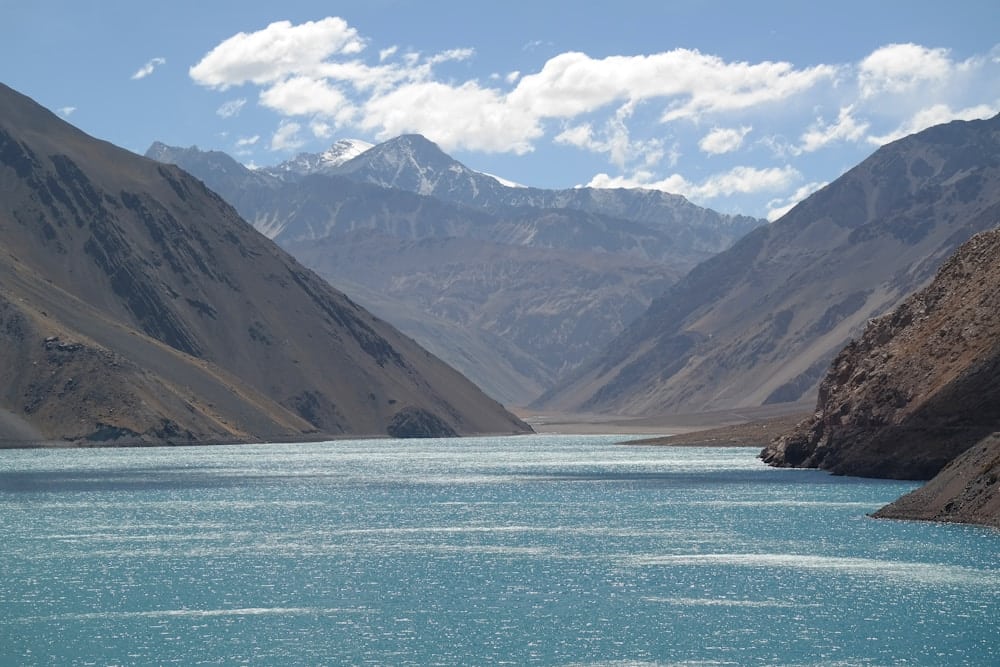
Unlike Napa Valley prices, Chilean wineries offer affordable harvest experiences. You can actually participate in grape picking, crushing, and barrel tastings.
The Regions
- Maipo Valley (near Santiago): Famous but crowded
- Colchagua Valley: Better wines, lower prices, same beautiful scenery
- Fall temperatures: 60s-70s, no rain, clear mountain views
Fall temperatures in the 60s-70s, no rain, and clear skies with mountain views. Perfect weather for outdoor wine tastings and vineyard tours.
Chilean wine experiences cost a fraction of European or California equivalents. Full-day winery tours with tastings, lunch, and transportation run $50-80 per person.
12. Scotland’s Highlands & Islands
Scottish autumn delivers moody landscapes, whisky season, and significantly fewer midges (those annoying biting insects that plague Scottish summers).
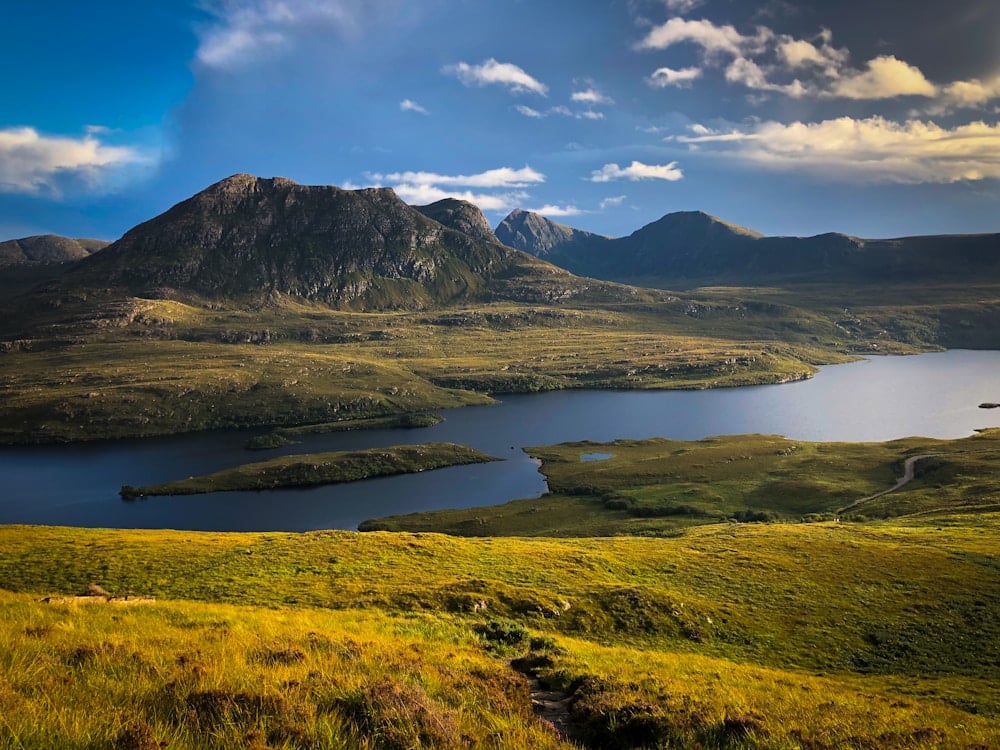
Summer in Scotland means clouds of biting midges. Fall kills them off, making hiking and outdoor activities actually pleasant.
Scotland’s fall colors are subtle: heather, bracken, and birch create purple, rust, and gold landscapes. Different from New England intensity but beautiful in its own way.
Whisky Season
Fall is whisky harvest season. Many distilleries offer special tours and tastings. Plus, cooler weather makes whisky tastings more appealing than summer.
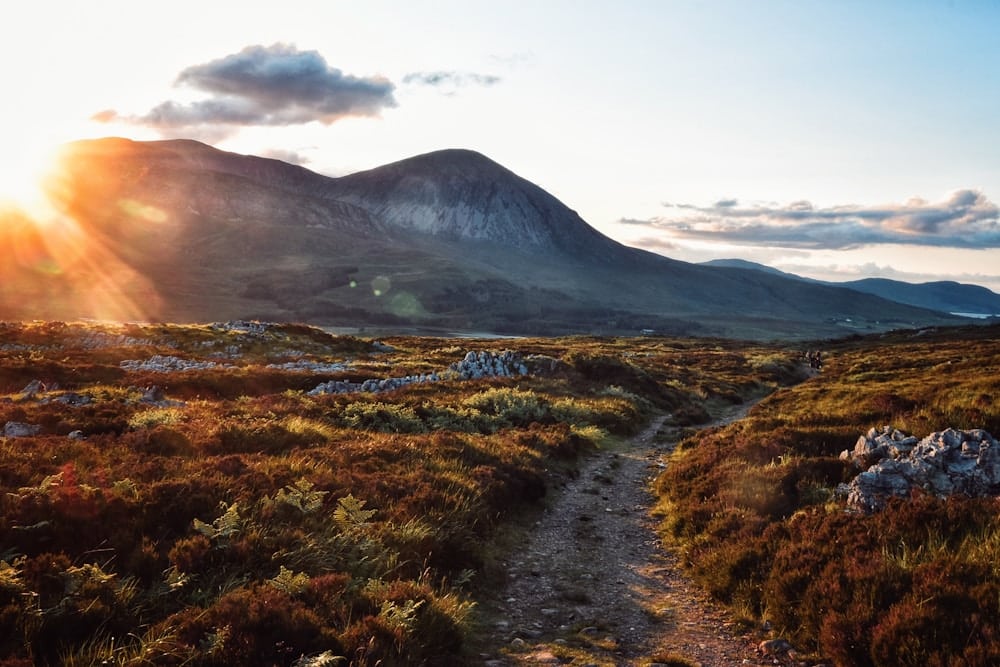
Isle of Skye
Scotland’s most famous island is perfect in the fall. Clear days offer mountain views, fewer crowds mean better photos, and accommodations are more available.
13. Austria’s Wachau Valley & Alpine Regions
Austria delivers fairy-tale fall scenery with some of Europe’s most spectacular foliage, plus it’s incredibly accessible with excellent infrastructure and no visa requirements for most travelers.
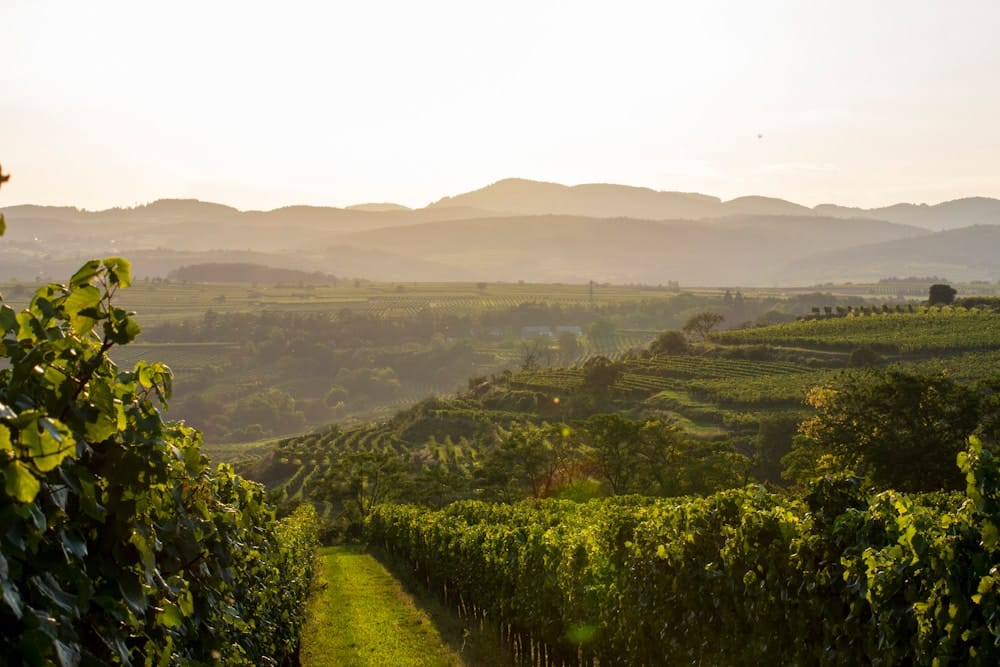
Austria is covered by forests, and you have to look for mixed forests for the best fall colors. The country combines Alpine drama with Danube Valley vineyards for diverse fall experiences.
Wachau Valley
This UNESCO World Heritage wine region along the Danube is perfect in the fall. Terraced vineyards turn gold and red, medieval castles dot the landscape, and harvest season means wine festivals everywhere.
Unique Alpine feature
- Different from typical evergreen mountain scenery elsewhere in Europe
- Larches: Among the only conifers that turn orange in late October
- Golden forests are unique to Alpine regions
Austria’s capital is gorgeous in the fall with massive parks turning color. Schönbrunn Palace gardens, the Vienna Woods, and countless coffee houses make it perfect for combining city culture with fall scenery.
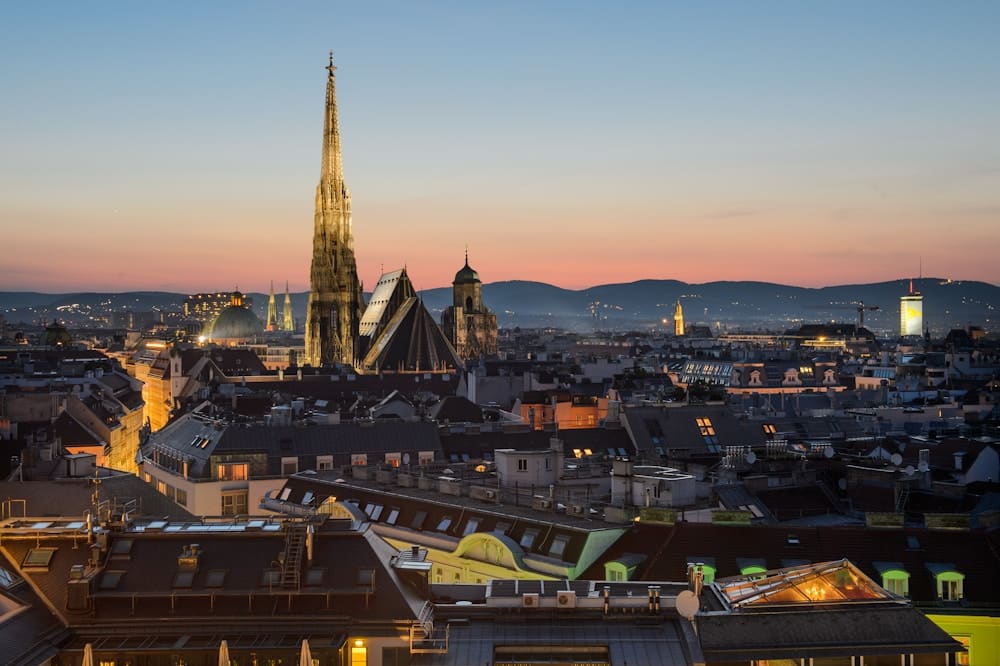
Austria has excellent train connections throughout Europe, no language barriers (most people speak English), and infrastructure designed for tourism. It’s one of the easiest European countries to navigate independently.
Peak foliage hits mid to late October in lower elevations, extending into early November in Vienna. Alpine larch forests peak at the end of October, offering a unique golden experience.
14. India’s Kashmir Valley
October-November in Kashmir offers perfect weather, clear mountain views, and spectacular autumn colors around Dal Lake and Gulmarg.

Kashmir summers can be crowded with domestic tourists escaping the heat from lower elevations. Fall brings cooler weather and fewer crowds.
The famous houseboats on Dal Lake are surrounded by chinar trees (Kashmir’s maples) that turn brilliant red and gold in October.
Saffron harvest season
- Cultural experiences with local farming families
- Purple crocus flowers create stunning landscapes
- World’s most expensive spice available directly from farmers
- Harvest timing coincides with perfect fall weather
Gulmarg Gondola
The world’s second-highest operating cable car offers incredible views of autumn valleys and snow-capped peaks.
15. Argentina’s Mendoza Province
March-April is harvest season in Argentina’s wine country, combining perfect fall weather with wine harvest experiences and Andean mountain views.
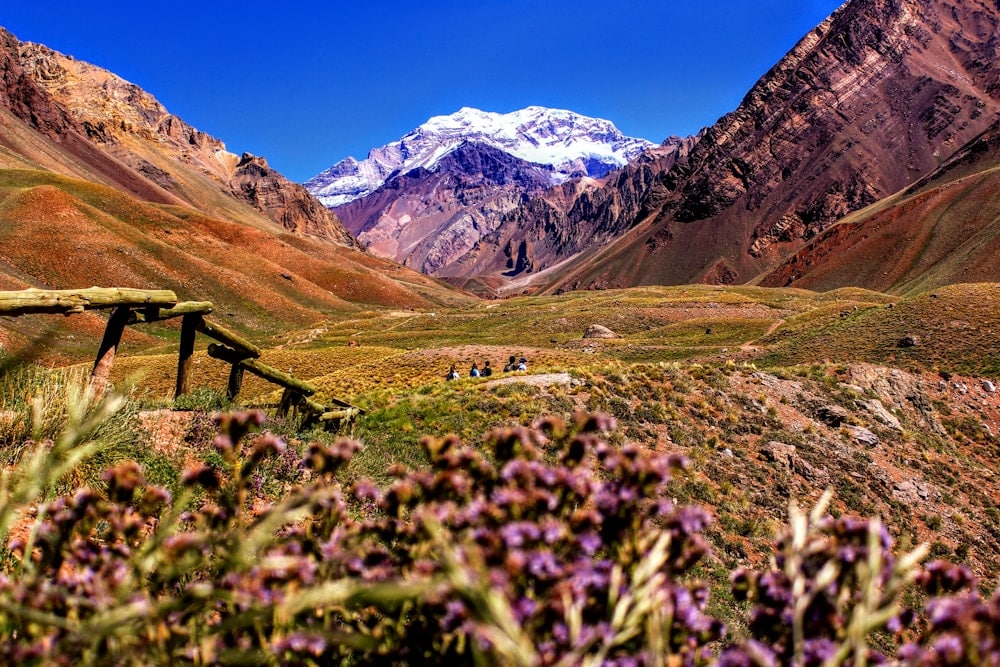
Vendimia (harvest) season runs from March to April with festivals, harvest participation, and special wine dinners throughout the region.
Mendoza sits at the base of the Andes with Argentina’s highest peaks as a backdrop. Fall brings clear skies and perfect mountain views that summer heat often obscures.
Wine experience value
- World-class wine experiences at a fraction of Napa Valley costs
- Full-day tours with tastings, lunch, transportation: $40-60
- Aconcagua access: South America’s highest peak base camp treks
- Buenos Aires connection: Short flight for urban/wine combination
You don’t need technical climbing skills for Aconcagua base camp treks. These offer incredible mountain scenery without dangerous mountaineering requirements.

